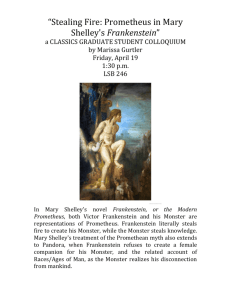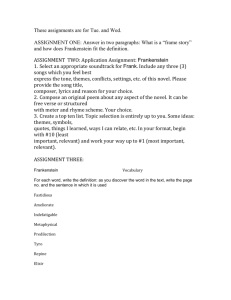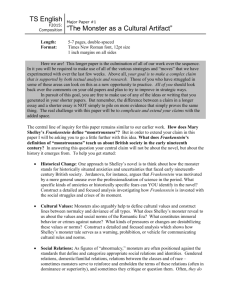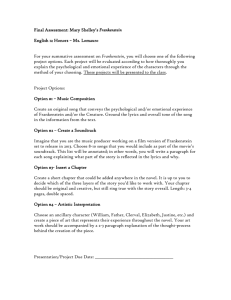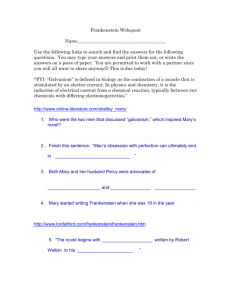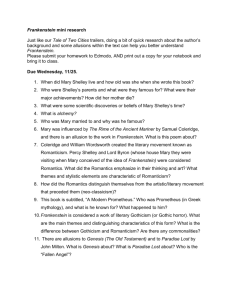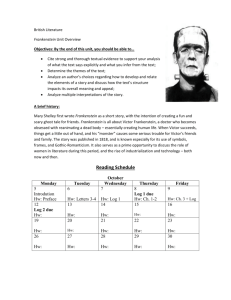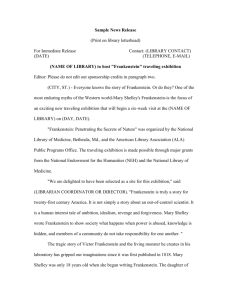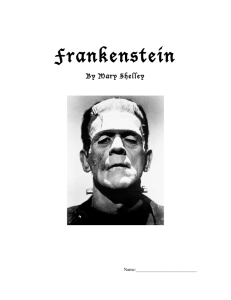Example Introductions
advertisement
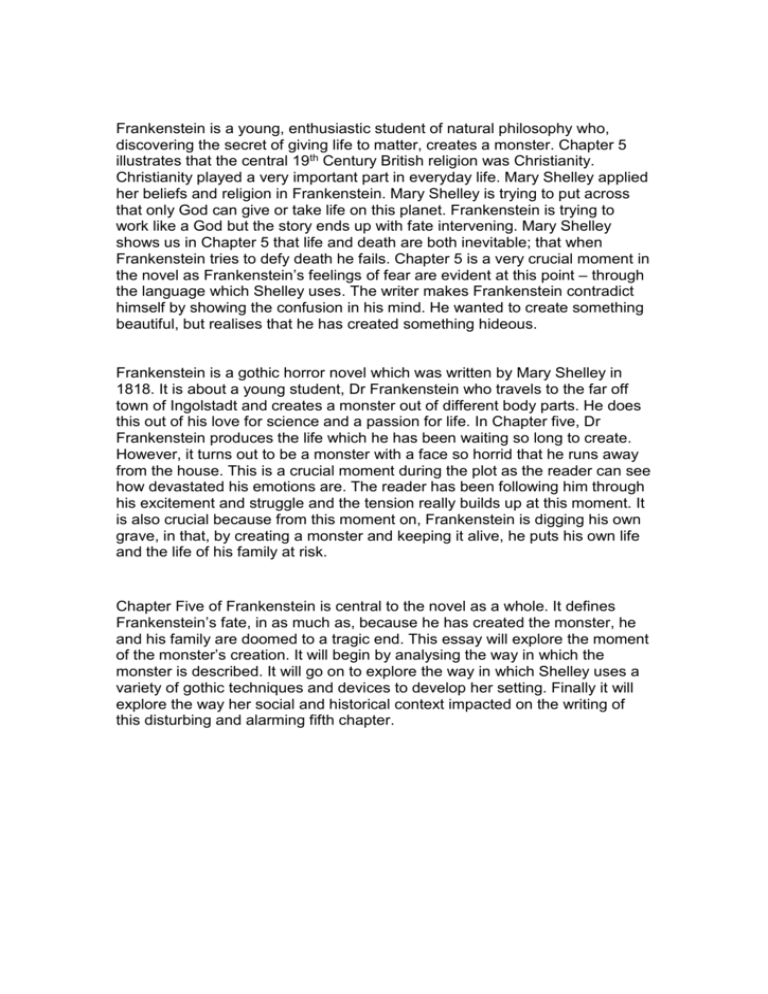
Frankenstein is a young, enthusiastic student of natural philosophy who, discovering the secret of giving life to matter, creates a monster. Chapter 5 illustrates that the central 19th Century British religion was Christianity. Christianity played a very important part in everyday life. Mary Shelley applied her beliefs and religion in Frankenstein. Mary Shelley is trying to put across that only God can give or take life on this planet. Frankenstein is trying to work like a God but the story ends up with fate intervening. Mary Shelley shows us in Chapter 5 that life and death are both inevitable; that when Frankenstein tries to defy death he fails. Chapter 5 is a very crucial moment in the novel as Frankenstein’s feelings of fear are evident at this point – through the language which Shelley uses. The writer makes Frankenstein contradict himself by showing the confusion in his mind. He wanted to create something beautiful, but realises that he has created something hideous. Frankenstein is a gothic horror novel which was written by Mary Shelley in 1818. It is about a young student, Dr Frankenstein who travels to the far off town of Ingolstadt and creates a monster out of different body parts. He does this out of his love for science and a passion for life. In Chapter five, Dr Frankenstein produces the life which he has been waiting so long to create. However, it turns out to be a monster with a face so horrid that he runs away from the house. This is a crucial moment during the plot as the reader can see how devastated his emotions are. The reader has been following him through his excitement and struggle and the tension really builds up at this moment. It is also crucial because from this moment on, Frankenstein is digging his own grave, in that, by creating a monster and keeping it alive, he puts his own life and the life of his family at risk. Chapter Five of Frankenstein is central to the novel as a whole. It defines Frankenstein’s fate, in as much as, because he has created the monster, he and his family are doomed to a tragic end. This essay will explore the moment of the monster’s creation. It will begin by analysing the way in which the monster is described. It will go on to explore the way in which Shelley uses a variety of gothic techniques and devices to develop her setting. Finally it will explore the way her social and historical context impacted on the writing of this disturbing and alarming fifth chapter.
